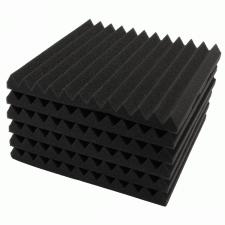It’s the time of year for saving money!
My wife is a gardener. During the last couple of weeks, she has been studying soil and how to make it better. As she was explaining to me some of the intricacies of soil amendments I noticed how similar gardeners, especially novice gardeners, are to audiophiles when it comes to some of the basics.
 A most common question in many of the gardening Internet forums is “What kind of fertilizer should I use?” The answers are predictable. “I use XYZ.” repeated with multiple individual variations. The obvious on-line and in-print audiophile parallel is “What room treatments should I buy?” or “Which cable would be best for me?”
A most common question in many of the gardening Internet forums is “What kind of fertilizer should I use?” The answers are predictable. “I use XYZ.” repeated with multiple individual variations. The obvious on-line and in-print audiophile parallel is “What room treatments should I buy?” or “Which cable would be best for me?”
Both in gardening and audiophilia the questions in the previous paragraph are simply unanswerable (correctly). Not because there is no answer, or that the answer is hopelessly complex, but because the query does not have sufficient information to enable a knowledgeable individual to field an answer. Just like “What color M&M is in my closed hand?” there is so little information that the answer is little more than a guess, no matter how much of an expert the answerer may be.
 In gardening, like audio, there is one correct way to find out what your soil needs to be turned into “good dirt.” It’s by testing. Only by having a lab test your soil (and it some times involves more than one test from more than one lab to get an accurate result) can you know what its missing in the way of nutrients, so you can confidently add the right fertilizers to bring your dirt to optimum nutrient levels.
In gardening, like audio, there is one correct way to find out what your soil needs to be turned into “good dirt.” It’s by testing. Only by having a lab test your soil (and it some times involves more than one test from more than one lab to get an accurate result) can you know what its missing in the way of nutrients, so you can confidently add the right fertilizers to bring your dirt to optimum nutrient levels.
Audio is exactly the same – without testing to see what your room’s issues are, you can’t hope to fix them. While you may solve the problem by trying other peoples’ stock solutions, the solution will occur by accident, not by focused forward progress.
The same problem applies to cable choices, but with fewer measurement or comparison options. But like a room, unless you figure out what a cable is doing that may be reducing fidelity, you can’t begin to make things better. For rooms, there are a bevy of tests we can run, but for cables, the only device I know that allows for direct and rapid matched-level A/B comparisons is WireWorld Cable Camparator. WireWorld even produced a CD of their in-house results. Unfortunately, WireWorld no longer offers their comparators for sale (and I wish they were for sale once more).
Frankly, without such a device like the Cable Comparator we are all, whether part of the “cables make a vital difference” crowd or the “They all sound the same” bunch, victims of the lack of codified tests to compare cables. Sure, we can make empirical observations, and after enough trial and error find wires that seem to be the least sonically pernicious, but that is a long way from being able to come to any robust conclusions that can be applied to other, different system set-ups.
 Just as in gardening, where a generalized answer to a vague question can result in a bad outcome, in audio the specifics of a particular situation must be considered if you hope to arrive at an applicable answer. While it may be true that there are no bad questions some are impossible to answer without more information. A generalized pat answer to a vague, poorly-defined question can send a beginner off into tangents best reserved for the lower levels of hell rather than pointing them toward a methodological path for success.
Just as in gardening, where a generalized answer to a vague question can result in a bad outcome, in audio the specifics of a particular situation must be considered if you hope to arrive at an applicable answer. While it may be true that there are no bad questions some are impossible to answer without more information. A generalized pat answer to a vague, poorly-defined question can send a beginner off into tangents best reserved for the lower levels of hell rather than pointing them toward a methodological path for success.
So, the next time someone asks you the question, “What room treatments I should buy?” instead of telling them what YOU used, try asking them a couple of questions first, such as, “What do you think your room’s problem are?” and perhaps the most important one, “Have you done any tests on your room?” Because, often times the best answer to a question is another question…







